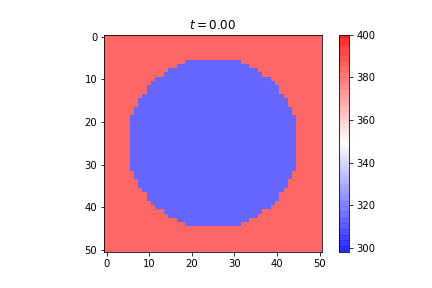An interesting property of Hamiltonian system
Published:
Problem. Show that in an hamiltonian system it is impossible to have asymptotically stable equilibrium positions and asymptotically stable limit cycles in the phase space.1
Ideas: first, consider a system of ODEs
\[\dot{\mathbf{x}} = f(\mathbf{x})\]In a neighborhood around an asymptotically stable equilibrium position, \(\mathbf{x}_0\), the equation could be written in expansion
\[\dot{\mathbf{x}} = A(\mathbf{x}-\mathbf{x}_0) + O(\|\mathbf{x}-\mathbf{x}_0\|^2)\]where the matrix \(A\) with all eigenvalue negative and \(O\) is the remainder (which is much small when \(\|\mathbf{x}-\mathbf{x}_0\|\) is small). Then, one way to prove a hamiltonian system \(H(\mathbf{q}, \dot{\mathbf{q}}, t)\) cannot have any asymptotically stable limit point is to show that the matrix \(A\) for the following equation cannot have all its eigenvalues be negative or have negative real parts.
\[\dot{\mathbf{q}} = A(\mathbf{q}-\mathbf{q}_0) + O(\|\mathbf{q}-\mathbf{q}_0\|^2)\]The case for the limit cycle would be much more complicated, but the idea is similar.
Proof. Let \(\mathbf{x}=[q_1, \dots, q_n, p_1, \dots, p_n]^T\) denotes the phase space coordinate. Then, a Hamiltonian system satisfies
\[\dot{q}_i = \frac{\partial H}{\partial p_i},~ \dot{p}_i = -\frac{\partial H}{\partial q_i}\]Then we could rewrite the equation in the form of
\[\dot{\mathbf{x}} = \begin{bmatrix} \dot{q}_1 \\ \vdots\\ \dot{q}_n \\ \dot{p}_1\\ \vdots \\ \dot{p}_n \end{bmatrix} = \begin{bmatrix} \frac{\partial H}{\partial p_1} \\ \vdots \\ \frac{\partial H}{\partial p_n} \\ -\frac{\partial H}{\partial q_1} \\ \vdots \\ -\frac{\partial H}{\partial q_n} \end{bmatrix} = f(\mathbf{x})\]Note that \(A\) equals to the first order derivative of \(f(\mathbf{x})\)
\[A(\mathbf{q}, \mathbf{p}, t) = \frac{\partial f(\mathbf{x})}{\partial\mathbf{x}} = \frac{\partial}{\partial\begin{bmatrix} \mathbf{q}\\ \mathbf{p} \end{bmatrix}} \begin{bmatrix} \frac{\partial H}{\partial \mathbf{p}}\\ -\frac{\partial H}{\partial \mathbf{q}} \end{bmatrix} = \begin{bmatrix} \frac{\partial^2 H}{\partial\mathbf{q}\partial\mathbf{p}} & \frac{\partial^2 H}{\partial\mathbf{p}\partial\mathbf{p}} \\ -\frac{\partial^2 H}{\partial\mathbf{q}\partial\mathbf{q}} & -\frac{\partial^2 H}{\partial\mathbf{p}\partial\mathbf{q}} \end{bmatrix}\]Then we can verify that the trace of \(A\) is \(0\), which means no Hamiltonian system can have an asymptotically stable equilibrium position.
\[\mathrm{tr}\ A(\mathbf{q}, \mathbf{p}, t) = \sum_{i}\frac{\partial^2 H}{\partial q_i\partial p_i} - \frac{\partial^2 H}{\partial p_i\partial q_i} = 0\]Arnol’d, V. I. (2013). Mathematical methods of classical mechanics (Vol. 60). Springer Science & Business Media. ↩


